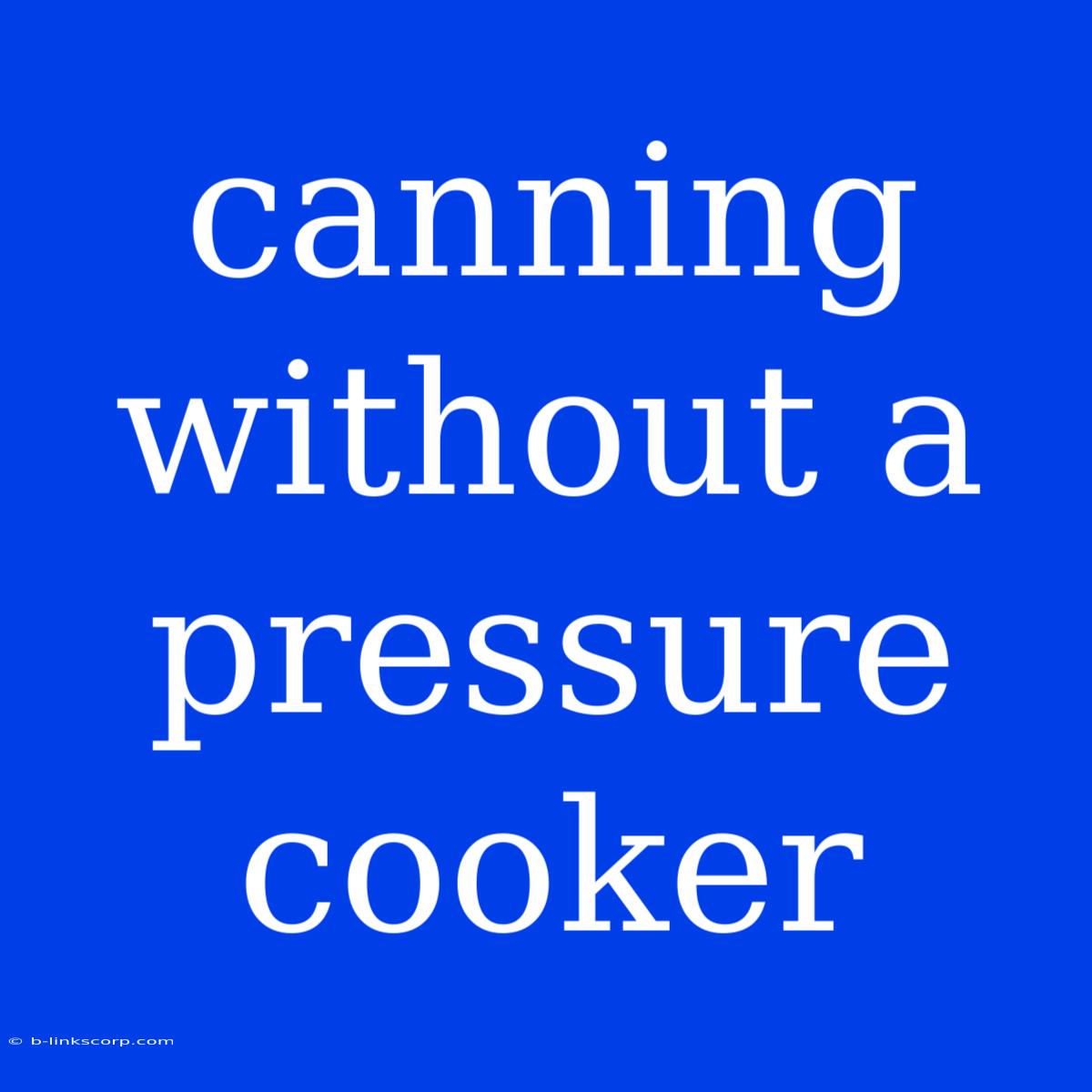Canning Without a Pressure Cooker: A Guide to Safe and Delicious Homemade Preserves
Canning is a wonderful way to preserve your garden’s bounty and enjoy delicious homemade jams, pickles, and sauces throughout the year. While a pressure cooker is the go-to for canning low-acid foods like meats and vegetables, you can safely and successfully can many high-acid foods without one.
This guide will equip you with the knowledge and confidence to can safely at home using a water bath canner.
What is Water Bath Canning?
Water bath canning relies on the heat of boiling water to create a vacuum seal within jars. This process is ideal for preserving high-acid foods such as:
- Fruits: Jams, jellies, preserves, fruit butters, and sauces
- Vegetables: Pickles, relishes, and some chutneys
- Other: Tomatoes (whole, crushed, or diced)
Choosing Your Equipment
Before you start canning, you'll need the right equipment. Here’s what you’ll need:
- Canning Jars: Use only wide-mouth canning jars designed for canning. Mason jars are a popular choice.
- Water Bath Canner: A large pot with a rack that holds the jars above the bottom.
- Jars Rings & Lids: New lids are essential for each batch as they create the vacuum seal. Rings can be reused.
- Jar Lifter: A tool to safely lift hot jars from the canner.
- Ladle: For transferring hot liquids into jars.
- Funnel: To prevent spills when filling jars.
- Measuring Cups and Spoons: For accurate ingredient measurements.
- Pot Holders: For handling hot jars and equipment.
- Clean Kitchen Towels: To dry jars and equipment.
- Clean Work Space: Ensure your work area is free of clutter and well-lit.
The Canning Process: Step-by-Step
1. Prepare the Jars:
- Wash jars, lids, and rings in hot, soapy water.
- Sterilize jars and lids by boiling them for 10 minutes or using a dishwasher cycle.
- Important: Do not sterilize the rings.
2. Prepare the Recipe:
- Follow a tested recipe designed specifically for water bath canning.
- Ensure your recipe includes the correct processing times.
3. Fill the Jars:
- Carefully fill the jars with the prepared recipe, leaving the proper headspace recommended by the recipe.
- Wipe jar rims with a clean cloth to remove any residue.
4. Seal the Jars:
- Place lids on jars and tighten rings securely, but not too tightly.
- Do not overtighten as it could prevent a good seal.
5. Process the Jars:
- Place the jars on the rack in the water bath canner.
- Add enough water to cover the jars by at least 1 inch.
- Bring the water to a rolling boil and maintain that boil for the specified processing time listed in the recipe.
- Important: Ensure the jars are submerged during the entire processing time.
6. Cool and Store:
- Carefully remove jars from the canner using the jar lifter.
- Place jars on a clean kitchen towel and let them cool completely.
- As the jars cool, you will hear a “popping” sound as the lids seal.
- Once cooled, check for a proper seal by pressing on the center of the lid. If it is depressed, it has not sealed and the jar needs to be refrigerated and consumed quickly.
- Store sealed jars in a cool, dark place.
Tips for Successful Canning
- Use fresh ingredients: High-quality ingredients will make the best preserves.
- Follow recipes carefully: Stick to tested recipes and follow instructions carefully.
- Use proper processing times: This is crucial for safety and preservation.
- Keep jars submerged: Ensure the water covers the jars throughout the processing time.
- Avoid over-tightening rings: This can prevent a proper seal.
- Cool jars slowly: Rapid cooling can cause jars to break.
Enjoy Your Preserves
Canning is a rewarding experience that allows you to create delicious and long-lasting preserves. By following these steps and using the right equipment, you can enjoy the fruits (and vegetables) of your labor all year round!

